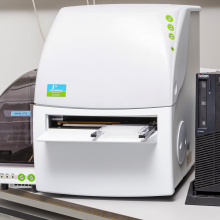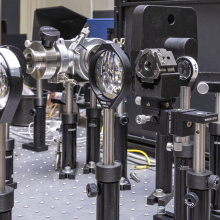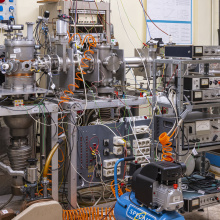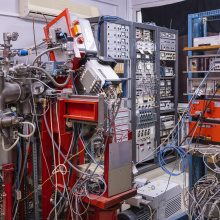2104 EnVision multilabel plate reader
It is a fast and sensitive reader that combines the use of optical filters and two monochromators. It comes with application-specific optical mirror modules, a xenon flash lamp and two high-speed detectors. EnVision also has a standard module for measurements in AlphaScreen ™ technology (PerkinElmer), temperature control, code reader, dispenser and 13 optical filters. The instrument has a 1- to 384-well plate format, scans the cell test well area, and has the ability to read fluorescence from the bottom of the plate.




